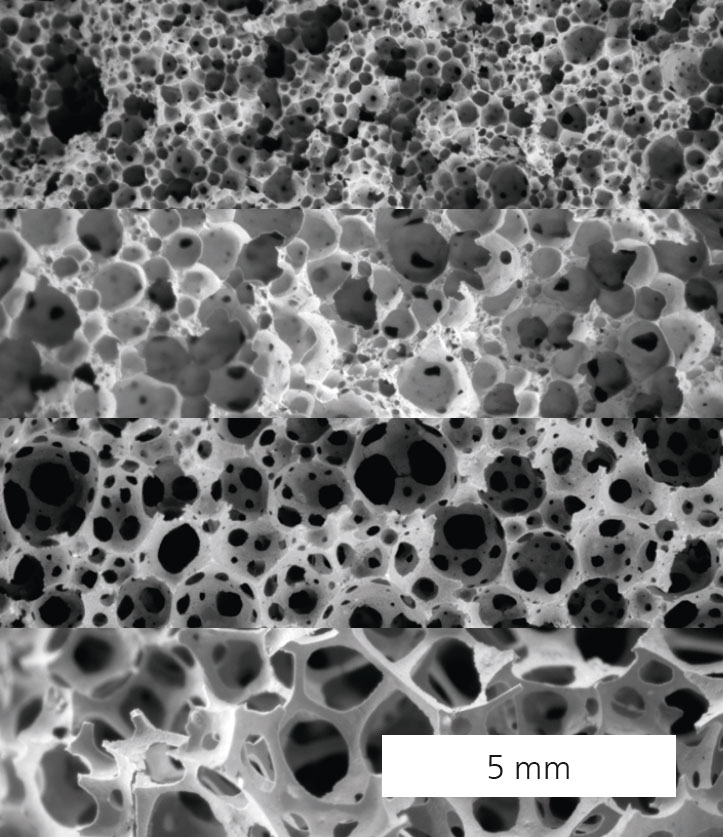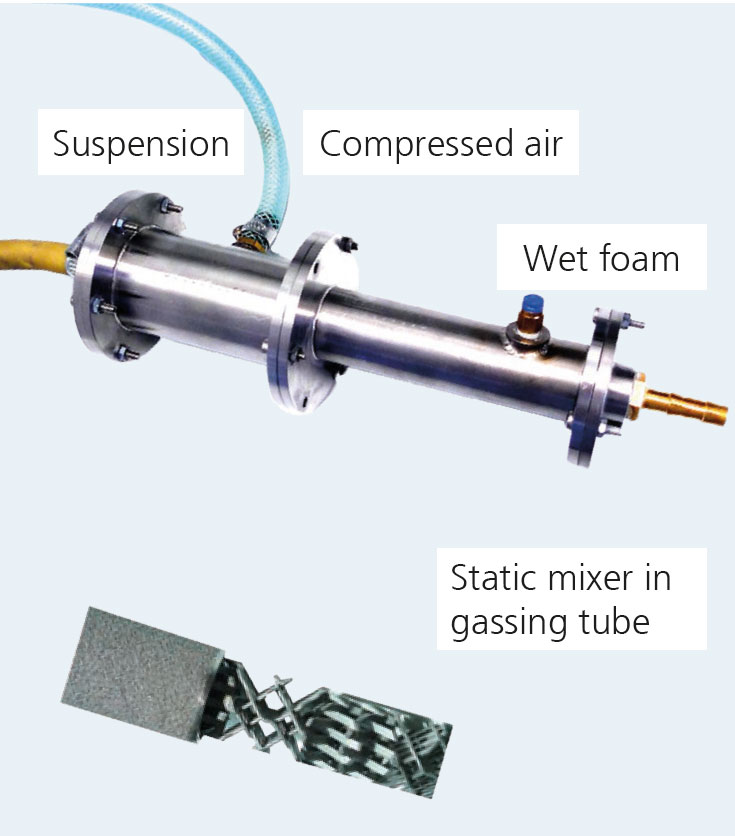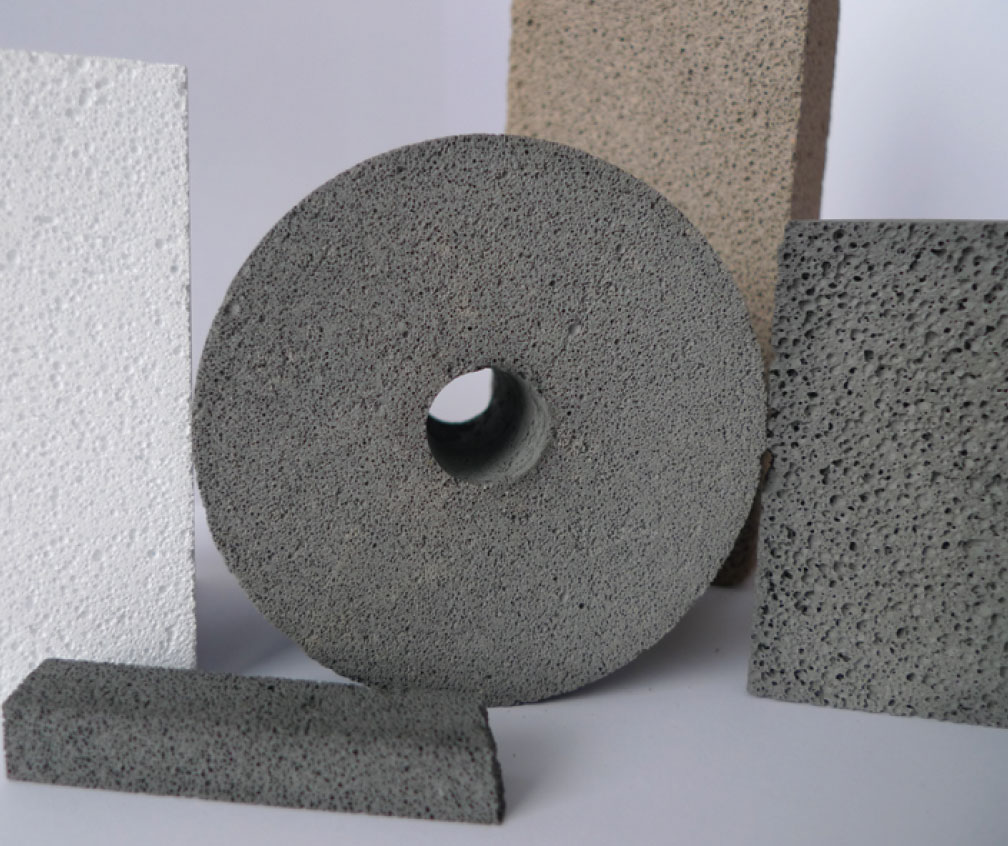
Direct foaming of ceramic slurries
Current research




Direct foaming enables the production of highly porous ceramics with closed or (partially) open porosity. The pores can be introduced directly into the structuring phase through various methods, for example by means of chemically acting blowing agent processes or by physically generating vapor pressure. A particularly efficient and ecological process is the introduction of air by gassing and/or mechanical stirring of the gas phase into a suspension using surfactants. The resulting wet foam is then filled into a mold, dried, demolded, and heat-treated.
Foam generator for the continuous production of direct foam
A foam generator was developed and patented at Fraunhofer IKTS. It enables the production of foamed ceramic slurries which is almost wear-free compared with conventional rotor-stator systems. Inside the unit, the slurry is pumped through a porous pipe while pressurized air is used to enable a stream of fine dispersed gas bubbles through the pipe into the slurry. Afterwards a static mixer blends slurry and air bubbles into a homogeneous foam. The porosity of this foam can be adjusted to values between 30 and 95 % by volume via the volume flow ratio of slurry and air. The pore size depends on the components used (pore size of the porous tube and diameter of the static mixer) and can be varied in the range between 100 μm and 2 mm. The new foam generator can produce 10 to 300 l of wet foam per hour. This makes the foaming device suitable for both laboratory operation and industrial production processes. Further upscaling to larger throughputs is possible.
An important aspect in the development of direct foams is stabilizing the gas bubbles in the wet foam. For this purpose, characterization methods were developed, and parameters were identified at Fraunhofer IKTS that allow targeted differentiation into stable and unstable foams. In particular, rheological parameters such as yield point, viscosity and storage and loss modulus have a significant influence on foam stability.
In addition to the rheological stabilization of the foam structure, current research focuses on methods for the accelerated consolidation of the wet foam state in order to shorten the drying process and thus make direct foam technology more efficient, especially for large-size components.
On the basis of this new technology, IKTS has already developed a variety of ceramic foams with adapted pore structures from a wide range of materials. These can be used, for example, for heat or sound insulation, in lightweight construction, as filter material or artificial bone replacement.
Services offered
- Development and characterization of cellular and highly porous ceramics
- Development and transfer of manufacturing technologies for components made of cellular ceramics
- Prototyping and prototype testing